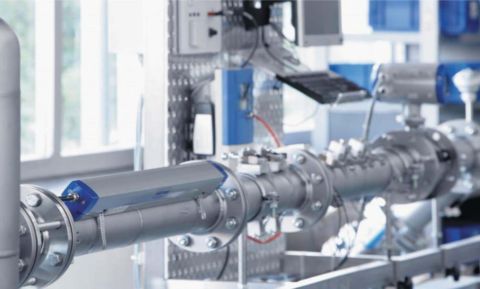A research study by an international team of scientists from Saudi Arabia, Iraq, India, and Russia on new capabilities of flow meters, has been published in the Scientific Reports journal. The team of scientists also included our fellow citizen Deputy Head of the SUSU Laboratory for Self-Validating Sensors, Systems, and Advanced Instrumentation Vladimir Sinitsin.
The scientists’ research focuses on the use of machine learning for modelling heat transfer in nanofluids.
“Traditional CFD modelling methods provide accurate results but require enormous computing capacity,” explains Vladimir Sinitsin. “CFD modelling is a computer simulation of fluid flow using the Navier-Stokes equations and heat transfer for complex systems (for example, pipes with nanofluids). It requires very powerful servers and time. Modelling of heat transfer in a single industrial heat exchanger can take at least two to four weeks. The innovation of our method is that we combined CFD methods with machine learning algorithms: GPR, KNN, and MLP. It is like switching from manual calculations to smart forecasting: faster, cheaper, but with the same level of accuracy.”
The results are impressive: GPR and KNN models predict temperature distribution to the accuracy of over 99.8%. This is a real breakthrough for flow meter and sensor manufacturers.
For example, a company is developing a new sensor for chemical production. Previously, its calibration required weeks of expensive CFD simulations. The models developed by the team of scientists, including Vladimir Sinitsin, make it possible to obtain similar data within literally hours and at minimal cost.
The use of nanofluids with CuO particles, which significantly improve heat transfer, is of particular interest. CuO is copper oxide (Cu is copper, O is oxygen). These nanoparticles are added to liquids (water, oil) to increase thermal conductivity by 20–30% and improve flow stability.
“We observed a clear parabolic temperature profile in the pipe,” noted the scientist. “This is completely consistent with the flow physics and confirms that the models are working correctly. For engineers, such data is a gold mine: it helps optimize sensor designs and improve their accuracy.”
The development can be applied in the energy, petrochemical, and climate control industries. Vladimir Sinitsin’s team plans to adapt the models to other types of liquids and complex industrial systems. This step paves the way for a true revolution in instrumentation.




